The 2K12 "Kub" became the mainstream Soviet mobile SAM and one of the key system fielded by the Warwsaw Pact in the 1975-85 decade. Each 2K12 battery is seconded by a 1S91 (SURN vehicle, NATO "Straight Flush") 25 kW G/H band radar with a range of 75 km (47 mi). The vehicle was equipped with a continuous wave illuminator in addition to an optical sight. The TEL does note share the same chassis, the 1S91 being based on the GM-568 chassis developed and produced by MMZ. It is estimated that circa 100+ were made until 1985. It was also exported to some extent.

The 1S91 (Cyrillic: 1С91; NATO designation: Straight Flush) was developed as a missile guidance radar complementary to the surface-to-air missile system “Kub” (NATO SA-5 Gammon). The vehicle shared a mostly similar chassis to the Launcher, and had notably a built-in high-resolution TV camera to visually track the target in addition to the radar, which operates in C-band. The target tracking radar and target illumination radar transmitter worked in I-band. The secondary radar method used “active response” for target tracking of the missile on its way to the target.
The “Kub” anti-aircraft missile complex entered service in 1967 as well as soon in many states of the former Warsaw Treaty. The 1S91 was the radar base vehicle assigbed to each battery. The Surveillance radar 1S11 was its centerpiece, comprising a base cylinder, fixed, but on which was attached a rotating base, supporting the 1S11 surveillance radar with a rectangular parabolic array placed on front of the upper rotating base, mounted on the turret. The search radar can be moved independently of the target tracking radar mounted atoip and dish-like.
The target tracking radar 1S31 is the dish-shaped radar system mounted atop the first 1S11 cylinder base, revolving on its own latform in order to be fully independent via a spindle axis crossing the base cylinder down to the base of the chassis. It is used for refined search and tracking of targets. The parabolic reflector ends with a small planar reflector for target illumination, suspended in front of the feed. The entire antenna can be rotated horizontally and at 360° independently of the search radar as said above. The target illumination radar transmitter is fully integrated.
The rest of the vehicle is based on the GM-568 chassis, which is part of the wider family:
GM-5975 (2K22 Tunguska), GM-5965 (Ranzhir-M), GM-5955 (Tor-M1/SA-15), GM-579 (SAM CPV 9C470), GM-577 9A39 TEL (SA-11/17)), GM-577 (TELAR 9A310), GM-578 (TEL 2P25/2K12 Kub), GM-568 (SURN 1S91), GM-539 (SA-6B), GM-575 (ZSU-23-4 Shilka), GM-369 tracked chassis, GM-355 (9A330 and 9K330 Tor), GM-352 (BM 2C6/2K22 Tunguska), GM-352M (2T Stalker IFV), GM-123/124 (2S3 Akatsiya, 2K11 Krug SAM, 2S4 Tyulpan, 2S5 Giatsint-S, GM-426 tracked chassis, GM-830/835 (S-300V SAM).
Note. specs are based on the BUK M1 chassis, GM-569: Weight 24t, Max. load, 11,5t, 4,60 base, Ground clearance, 45 cm, ground pressure 0.8kg/cm2. Its engine is an MZ multi-fuel liquid-cooled diesel 522 Kw (710 hp) up to 618 Kw (840 hp) with a top speed of 65 kph, range 500 km. It was tested operation under ambient air temperature of -50 to + 50C, relative air humidity at +35 C, 98% with dust content of ambient air during movement up to 2.5g/m3. The chassis had three forward seats, a driver and two operators, and a small rear compartment for another radar operator.
The vehicle had the same basic protection as the GM-569 chassis, against small arms fire and splinter (13 mm forward, 8 mm at all angles). It is protected with collective NBC, had fire extinguishing systems in the engine compartment at the rear, crew compartment forward and radar power generator in the center, below the turret. The drivetrain comprises six spiked stamped roadwheels, front idlers, rear sprockets, no support rollers and same standard two-pin tracks. There is no armament nor smoke projectors for active concealment.


Vehicles of the Complex, at battery and regimental level.
The 2K12 missile complex was part of a full, self-supported combat unit comprising per battery four triple-missile TELs, a single 1S91 vehicle, four trucks, each carrying three spare missiles, and a crane loading and support vehicle. In 2022, mistakenly believing that it was targeting a Ukrainian transport aircraft, the Malaysia Airlines MH17 plane was shot down over Ukrainian territory with the help of this radar system. Among operators outside USSR were Poland, the Czech Republic, Ukraine, Serbia, Iraq and Syria.
metrowagonmash.ru/gm596
butterfingeredmodelbuilder.wordpress.com
flickr.com
substackcdn.com pic1
substackcdn.com pic2
bmanalysis.substack.com
odin.tradoc.army.mil
radartutorial.eu
Kvadrat-ML
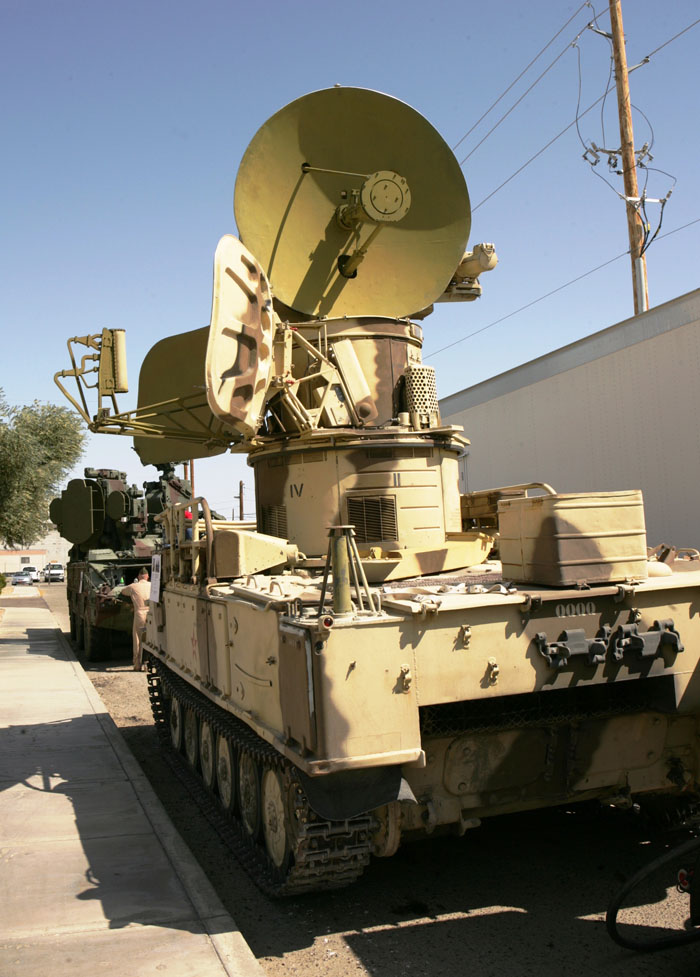
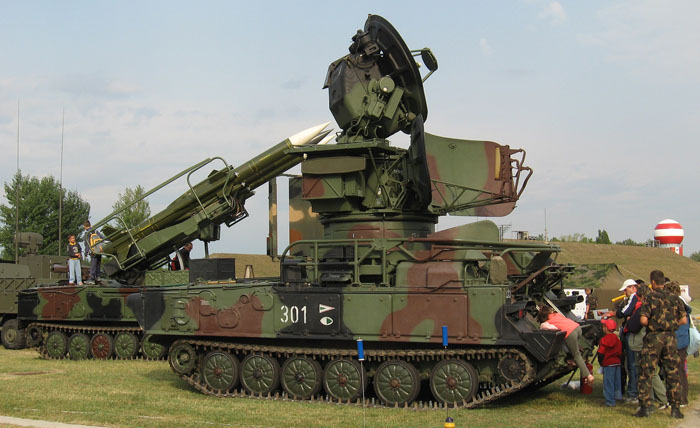
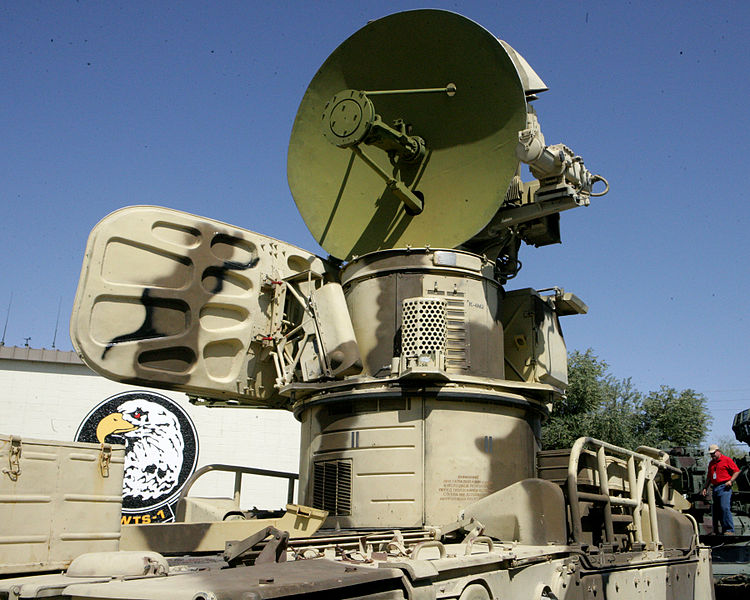
Design of the 1S91 “Straight Flush”

The 1S91 (Cyrillic: 1С91; NATO designation: Straight Flush) was developed as a missile guidance radar complementary to the surface-to-air missile system “Kub” (NATO SA-5 Gammon). The vehicle shared a mostly similar chassis to the Launcher, and had notably a built-in high-resolution TV camera to visually track the target in addition to the radar, which operates in C-band. The target tracking radar and target illumination radar transmitter worked in I-band. The secondary radar method used “active response” for target tracking of the missile on its way to the target.
The “Kub” anti-aircraft missile complex entered service in 1967 as well as soon in many states of the former Warsaw Treaty. The 1S91 was the radar base vehicle assigbed to each battery. The Surveillance radar 1S11 was its centerpiece, comprising a base cylinder, fixed, but on which was attached a rotating base, supporting the 1S11 surveillance radar with a rectangular parabolic array placed on front of the upper rotating base, mounted on the turret. The search radar can be moved independently of the target tracking radar mounted atoip and dish-like.
The target tracking radar 1S31 is the dish-shaped radar system mounted atop the first 1S11 cylinder base, revolving on its own latform in order to be fully independent via a spindle axis crossing the base cylinder down to the base of the chassis. It is used for refined search and tracking of targets. The parabolic reflector ends with a small planar reflector for target illumination, suspended in front of the feed. The entire antenna can be rotated horizontally and at 360° independently of the search radar as said above. The target illumination radar transmitter is fully integrated.
MMZ GM-568 Chassis design

The rest of the vehicle is based on the GM-568 chassis, which is part of the wider family:
GM-5975 (2K22 Tunguska), GM-5965 (Ranzhir-M), GM-5955 (Tor-M1/SA-15), GM-579 (SAM CPV 9C470), GM-577 9A39 TEL (SA-11/17)), GM-577 (TELAR 9A310), GM-578 (TEL 2P25/2K12 Kub), GM-568 (SURN 1S91), GM-539 (SA-6B), GM-575 (ZSU-23-4 Shilka), GM-369 tracked chassis, GM-355 (9A330 and 9K330 Tor), GM-352 (BM 2C6/2K22 Tunguska), GM-352M (2T Stalker IFV), GM-123/124 (2S3 Akatsiya, 2K11 Krug SAM, 2S4 Tyulpan, 2S5 Giatsint-S, GM-426 tracked chassis, GM-830/835 (S-300V SAM).
Note. specs are based on the BUK M1 chassis, GM-569: Weight 24t, Max. load, 11,5t, 4,60 base, Ground clearance, 45 cm, ground pressure 0.8kg/cm2. Its engine is an MZ multi-fuel liquid-cooled diesel 522 Kw (710 hp) up to 618 Kw (840 hp) with a top speed of 65 kph, range 500 km. It was tested operation under ambient air temperature of -50 to + 50C, relative air humidity at +35 C, 98% with dust content of ambient air during movement up to 2.5g/m3. The chassis had three forward seats, a driver and two operators, and a small rear compartment for another radar operator.
The vehicle had the same basic protection as the GM-569 chassis, against small arms fire and splinter (13 mm forward, 8 mm at all angles). It is protected with collective NBC, had fire extinguishing systems in the engine compartment at the rear, crew compartment forward and radar power generator in the center, below the turret. The drivetrain comprises six spiked stamped roadwheels, front idlers, rear sprockets, no support rollers and same standard two-pin tracks. There is no armament nor smoke projectors for active concealment.

1S91 specifications | |
| Dimensions (L-w-h) | As GM-569 (2K12) |
| Total weight, battle ready | 24t, Max. load, 11,5t |
| Crew | 3+1 |
| Propulsion | MMZ V12 diesel 618 Kw (840 hp) |
| Top speed | 65 kph |
| Suspensions | Torsion Bars |
| Range | 500 km est. |
| Armament | None |
| Armor | As GM-569 (see notes) |
| Production | c100+ |
The 1S91 in action

Vehicles of the Complex, at battery and regimental level.
The 2K12 missile complex was part of a full, self-supported combat unit comprising per battery four triple-missile TELs, a single 1S91 vehicle, four trucks, each carrying three spare missiles, and a crane loading and support vehicle. In 2022, mistakenly believing that it was targeting a Ukrainian transport aircraft, the Malaysia Airlines MH17 plane was shot down over Ukrainian territory with the help of this radar system. Among operators outside USSR were Poland, the Czech Republic, Ukraine, Serbia, Iraq and Syria.
Sources
metrowagonmash.ru/gm596tmetrowagonmash.ru/gm596
butterfingeredmodelbuilder.wordpress.com
flickr.com
substackcdn.com pic1
substackcdn.com pic2
bmanalysis.substack.com
odin.tradoc.army.mil
radartutorial.eu
Kvadrat-ML


Illustration
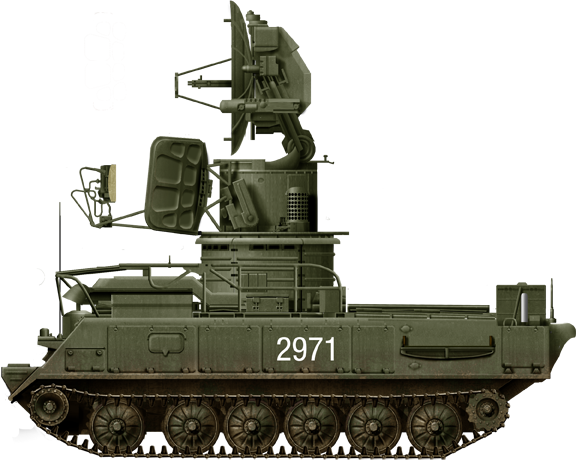
Soviet 1S91
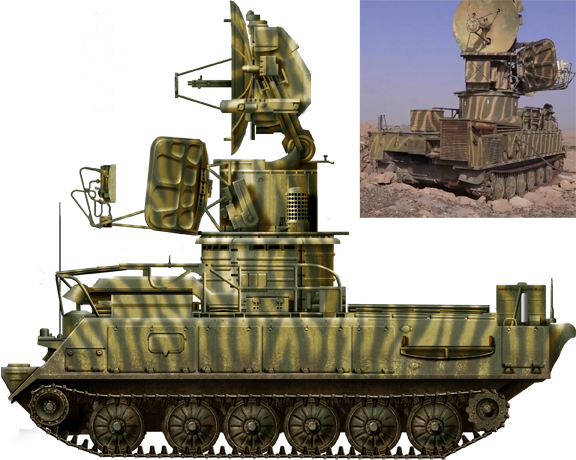
Syrian vehicle
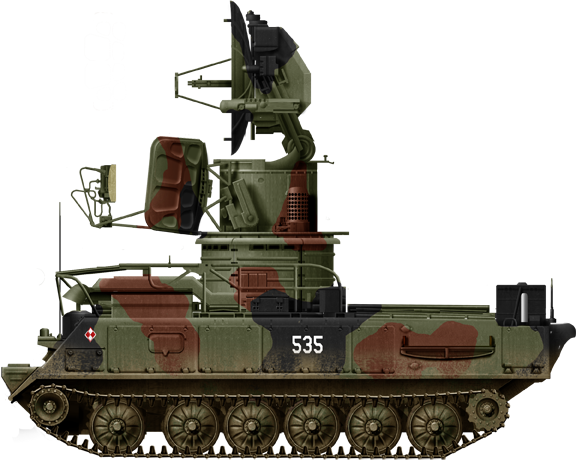
Polish 1S91
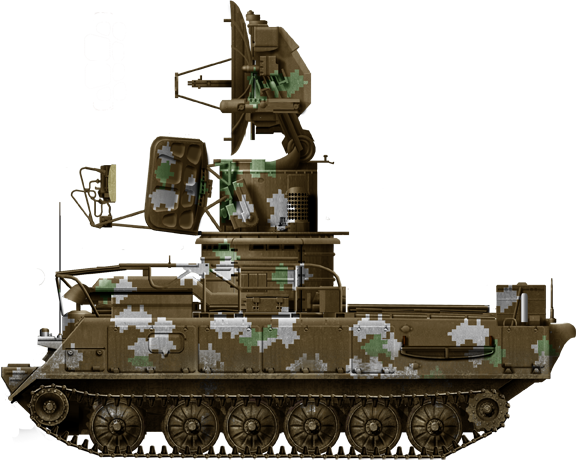
Late 1S91 D2 part of the SAM system 2K12-ML (Kvadrat-ML) complex
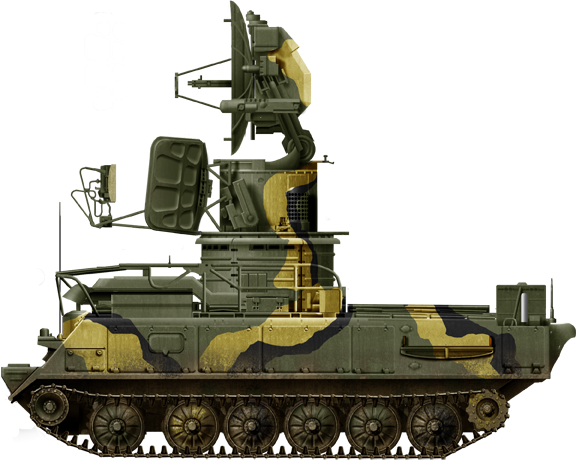
Modern Russian Camouflage
Gallery
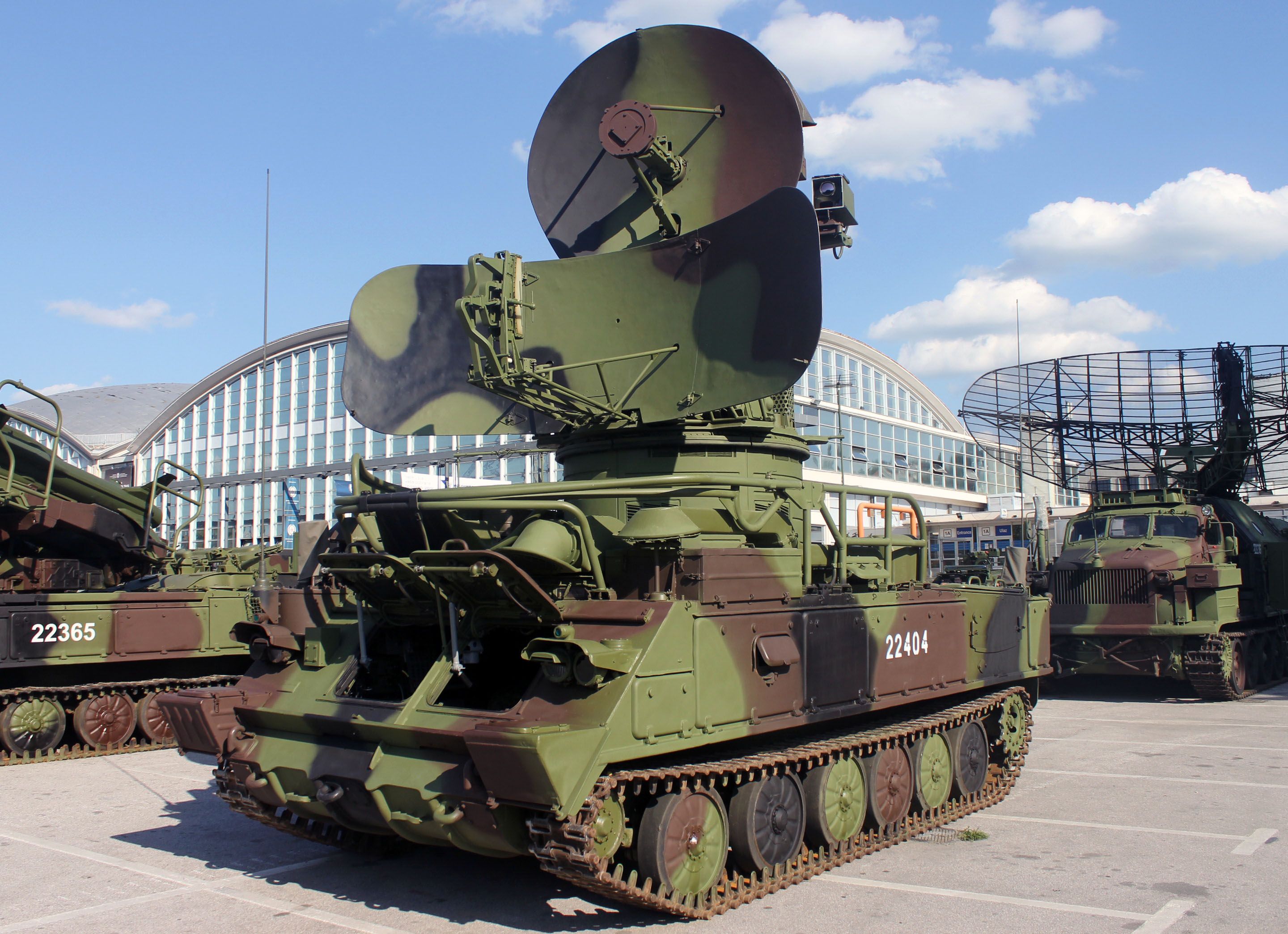
Serbian 1S91

Slovakian vehicle
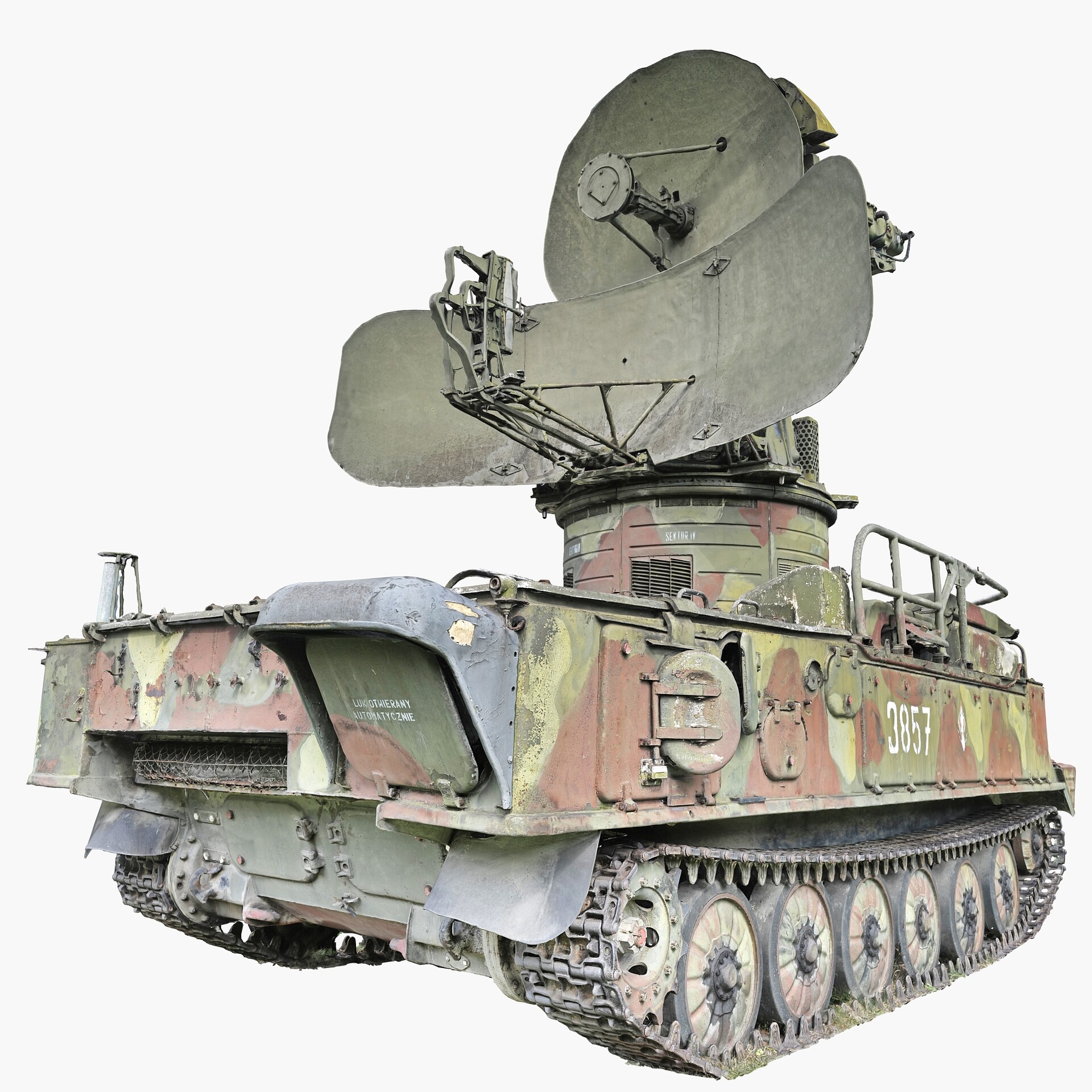
Rear of a Polish vehicle

Cold War Tanks


































Cold war tanks posters

Cold War Main Battle Tanks

Cold War Soviet Army

